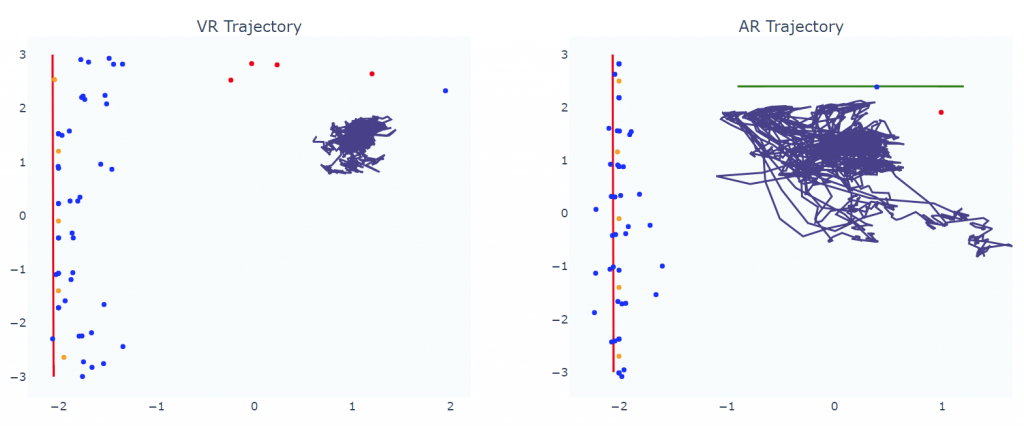Our paper on comparing the affordances with augmented and virtual reality using IST, “Different Realities: a Comparison of Augmented and Virtual Reality for the Sensemaking Process” has been published in Frontiers in Virtual Reality! Many thanks to my co-authors, particularly Kylie Davidson, for her assistance on this study. This work looked at how participants used IST in both augmented and virtual reality to understand separate datasets in two non-consecutive sessions. Our paper can be accessed here or here and the abstract follows:

Analysts perform sensemaking on large complex multimedia datasets in order to extract concepts, themes, and other kinds of insights from them. Immersive analytics, in particular, puts users in virtual environments that allow them to explore data in a unique way where they can interact and move through the data. Previous research using virtual reality immersive analytics tools found users wanting to refer to real-world objects or understand the physical world around them while continuing to perform their analysis. Therefore, we designed and ran a comparative study looking at the tradeoffs between virtual and augmented reality for our immersive analytics approach: Immersive Space to Think. Through two mixed-methods studies we found that virtual reality affords users a space where users can focus more on their task, but augmented reality allows them to use various real-world tools that can increase user satisfaction. In future immersive analytics tools, we recommend a blend of the two – augmented virtuality – with pass-through portals which allow users to see various real-world tools, such as whiteboards or desks and keyboards, while still giving themselves a space to focus.